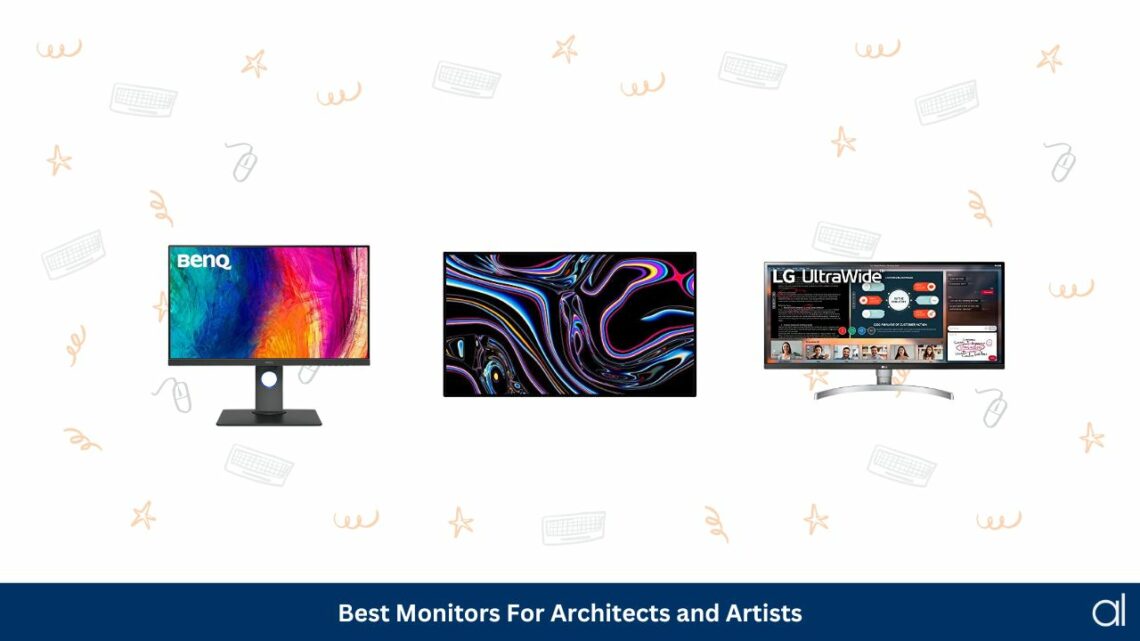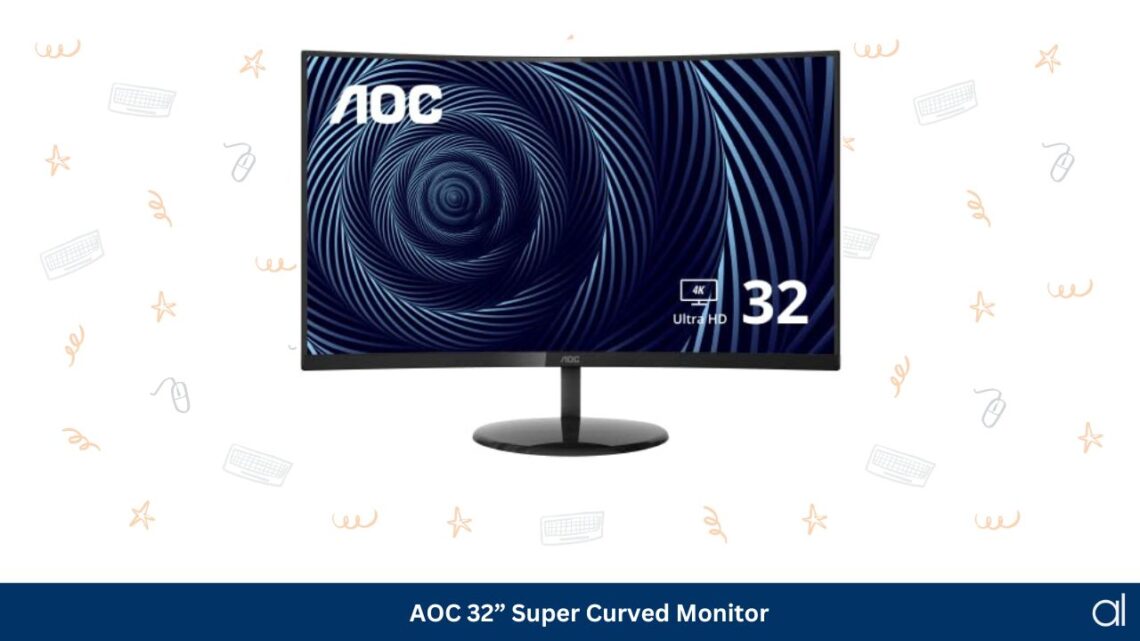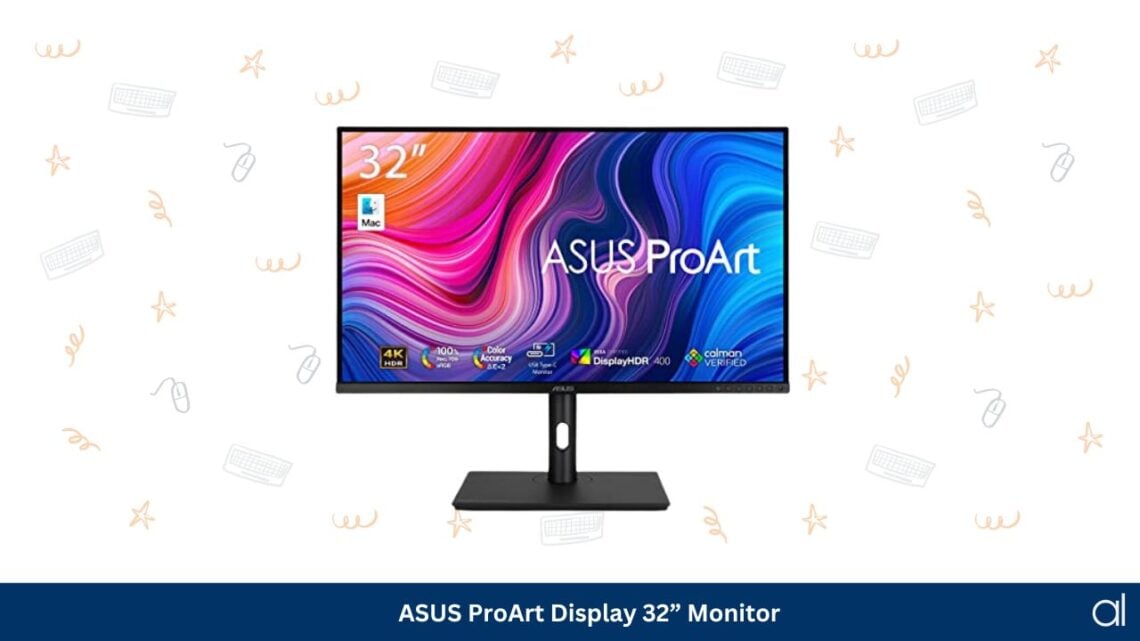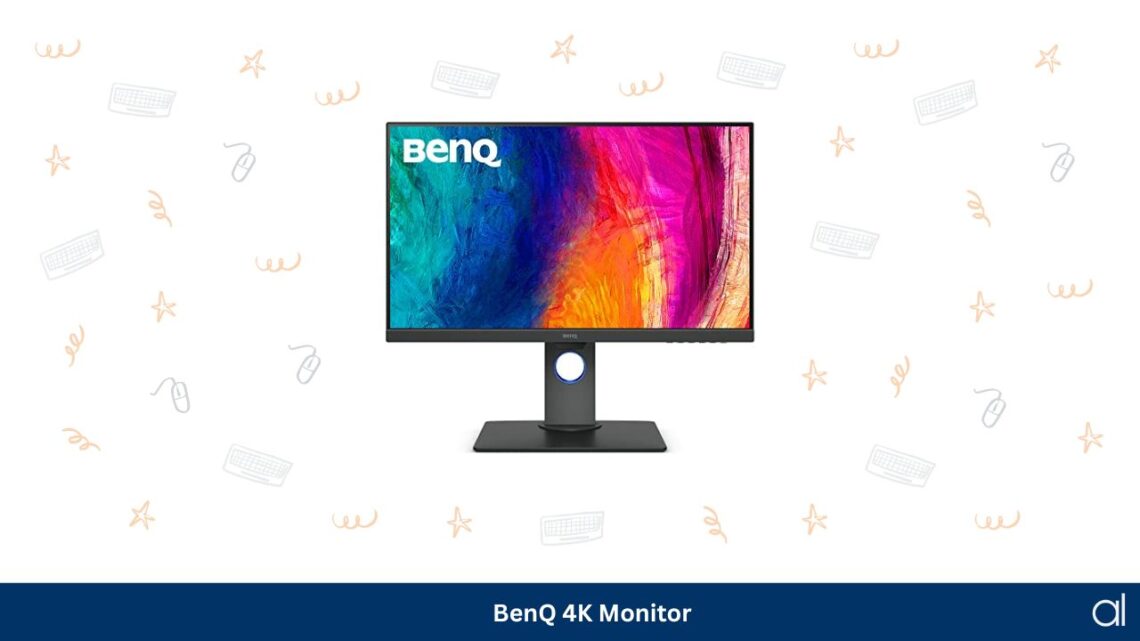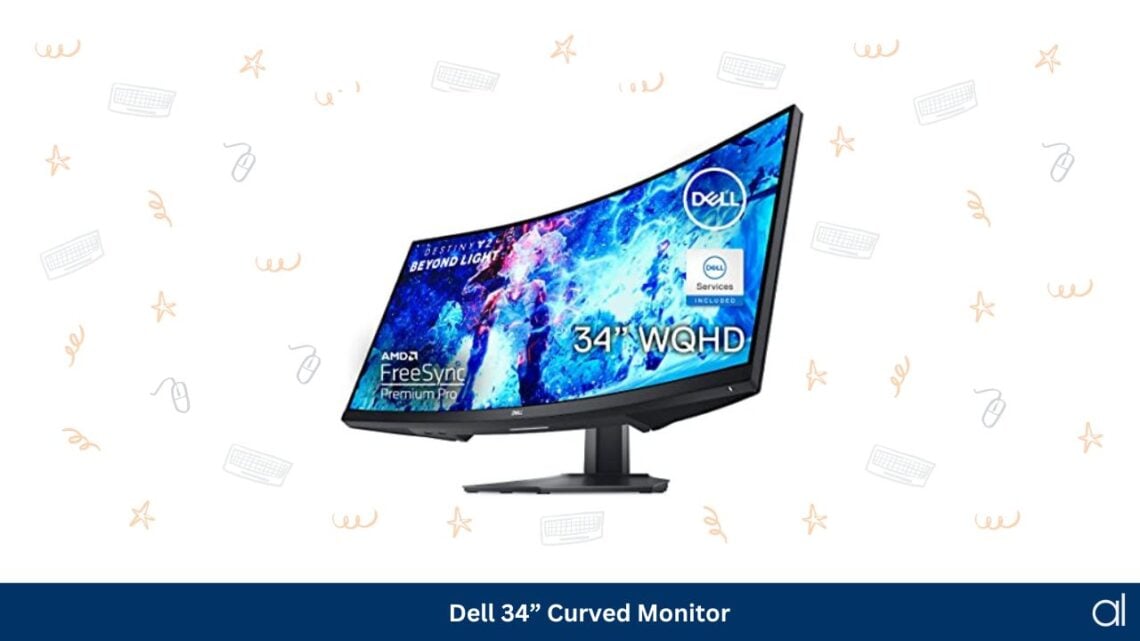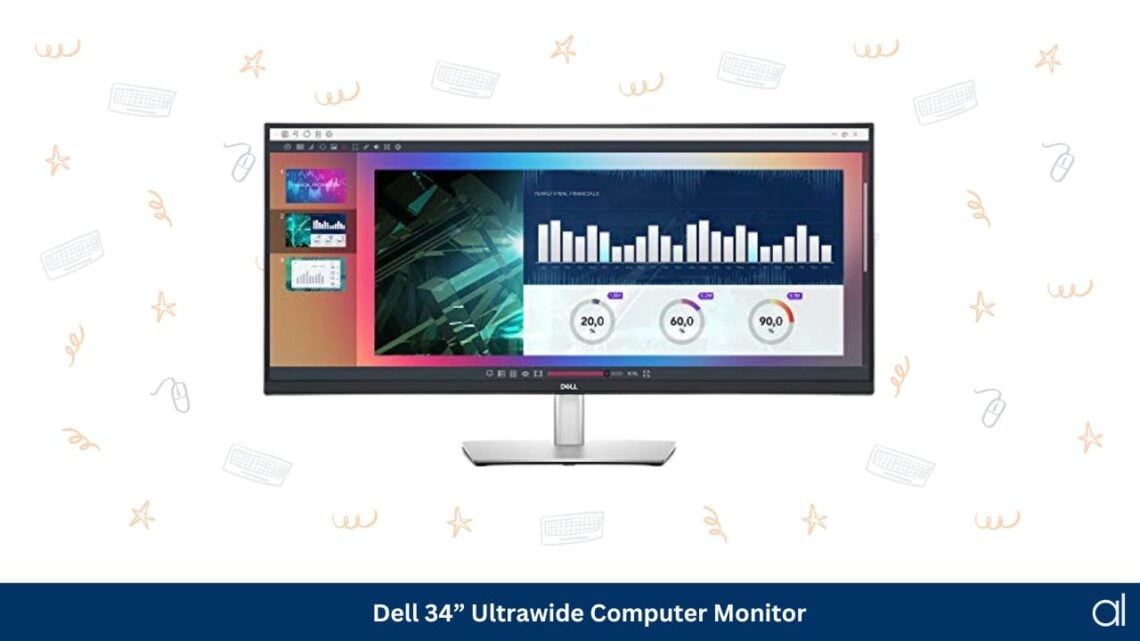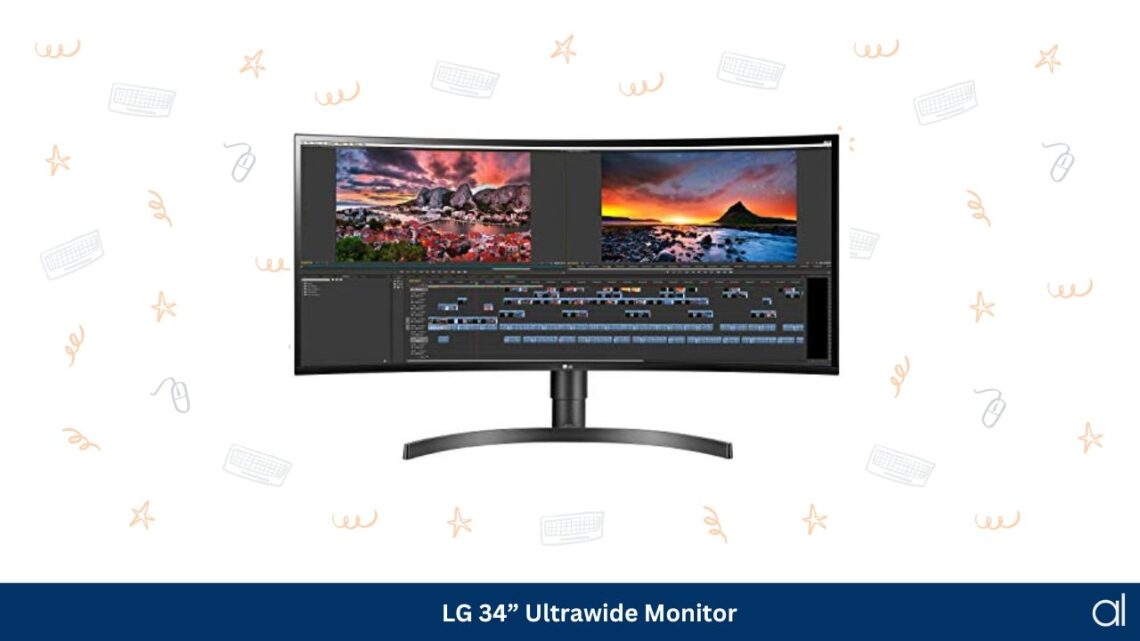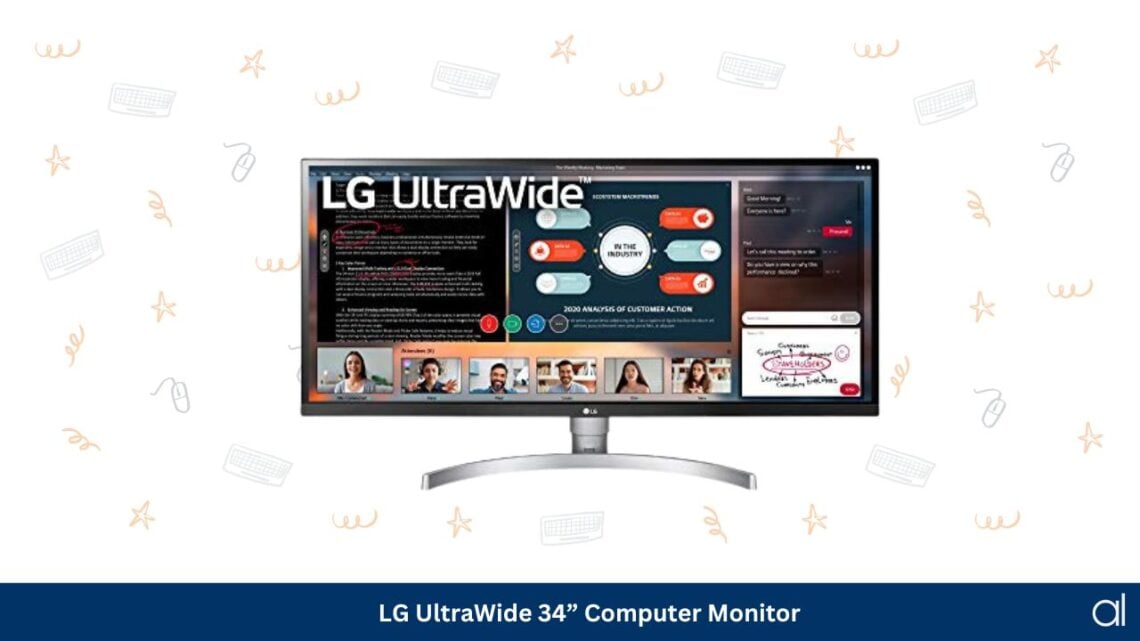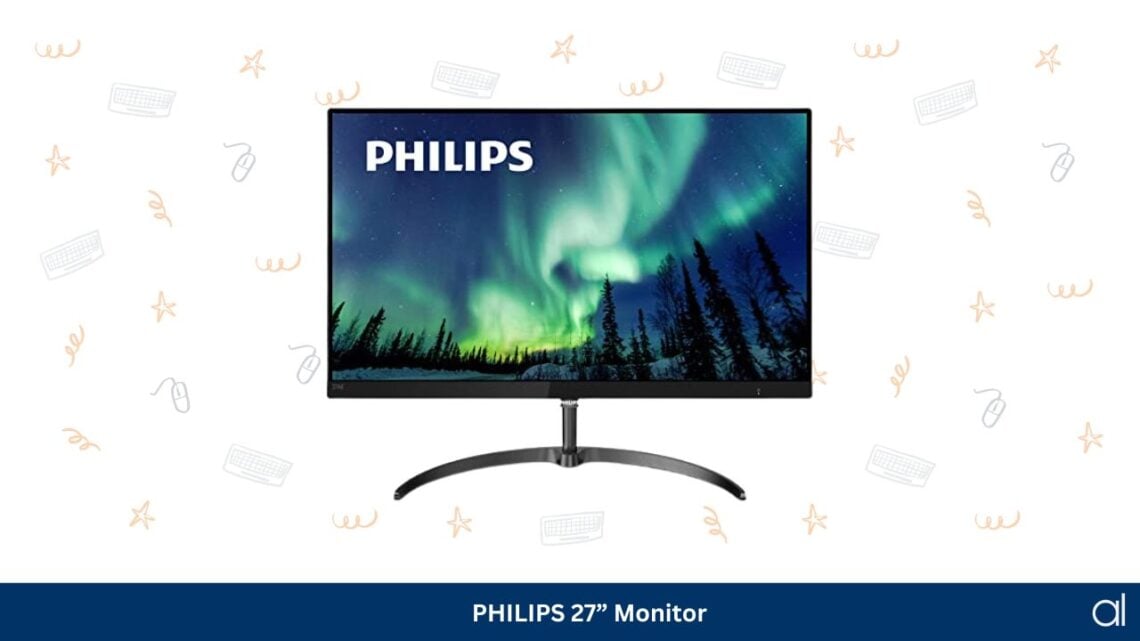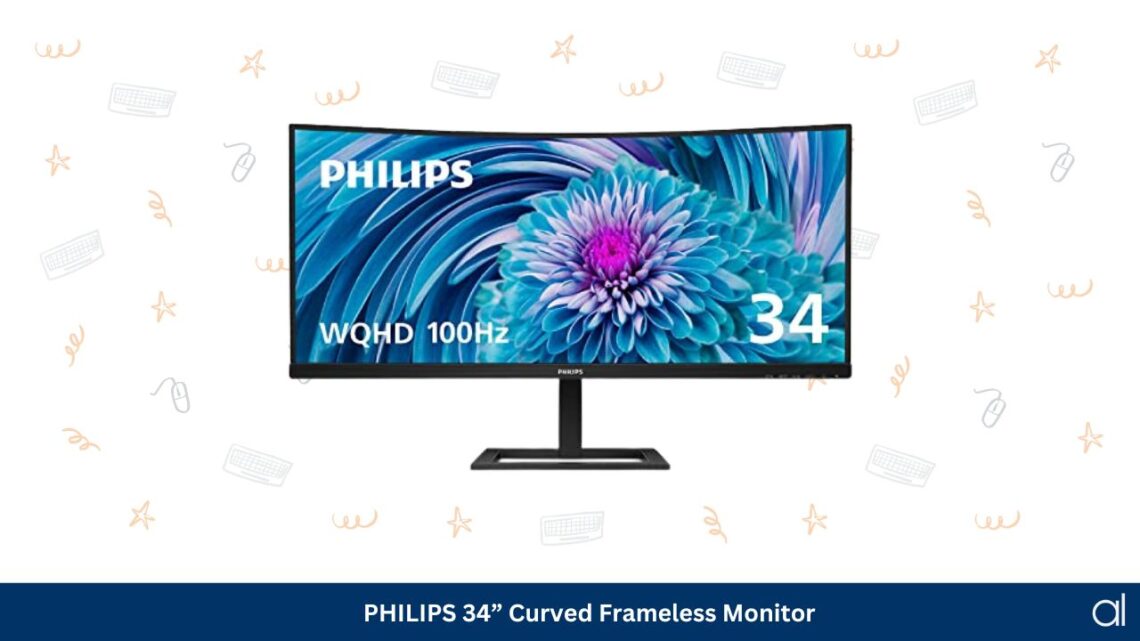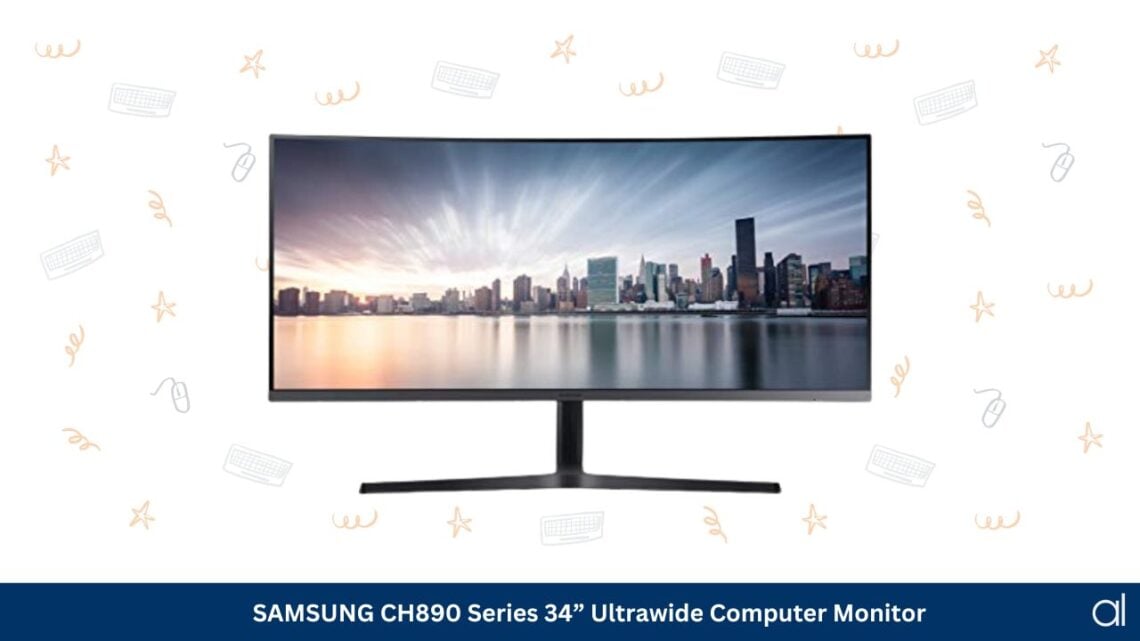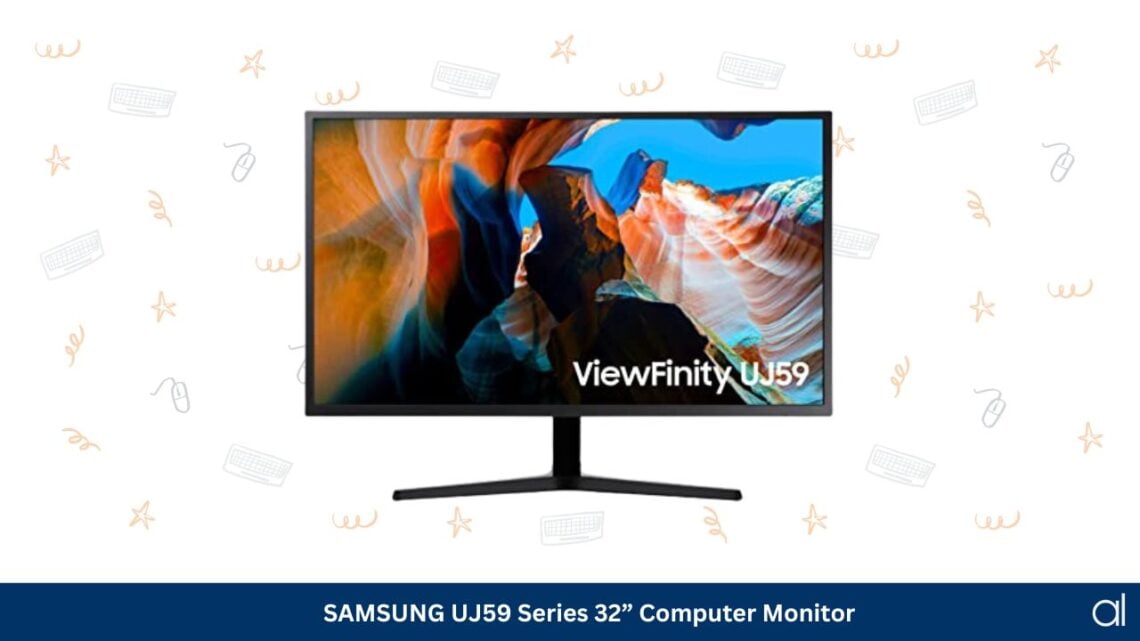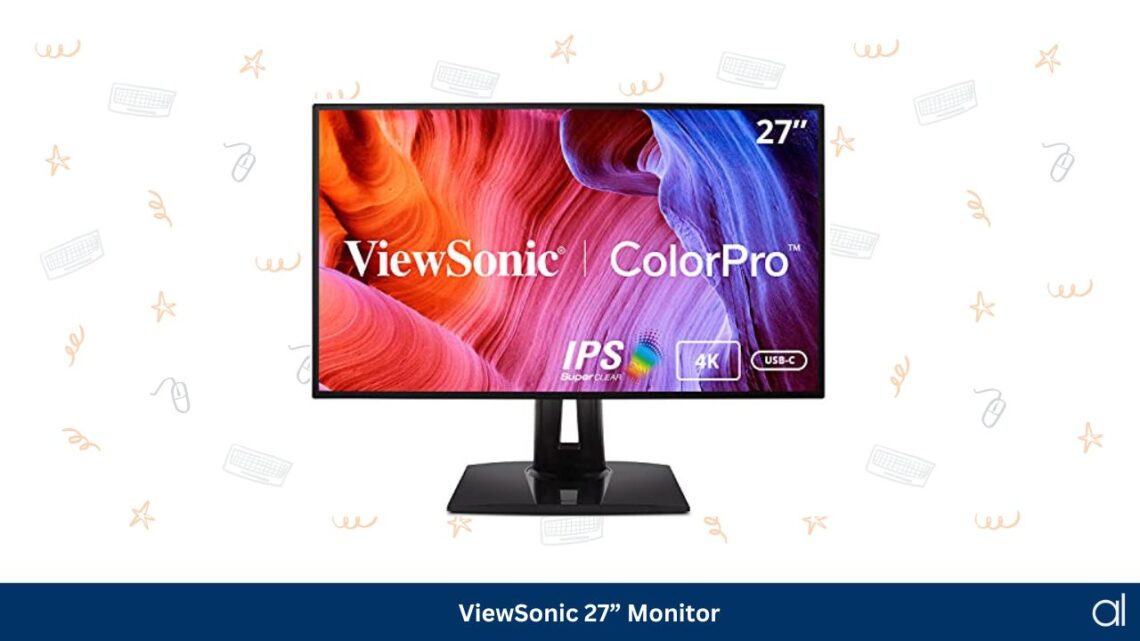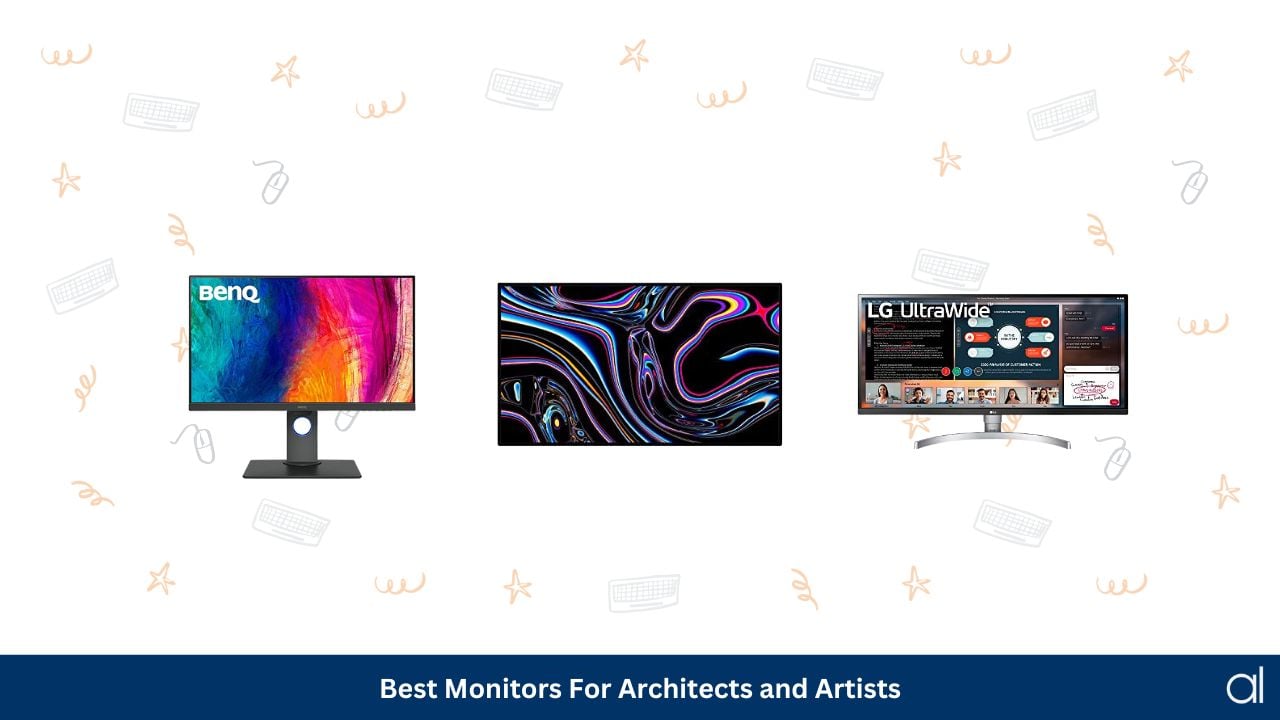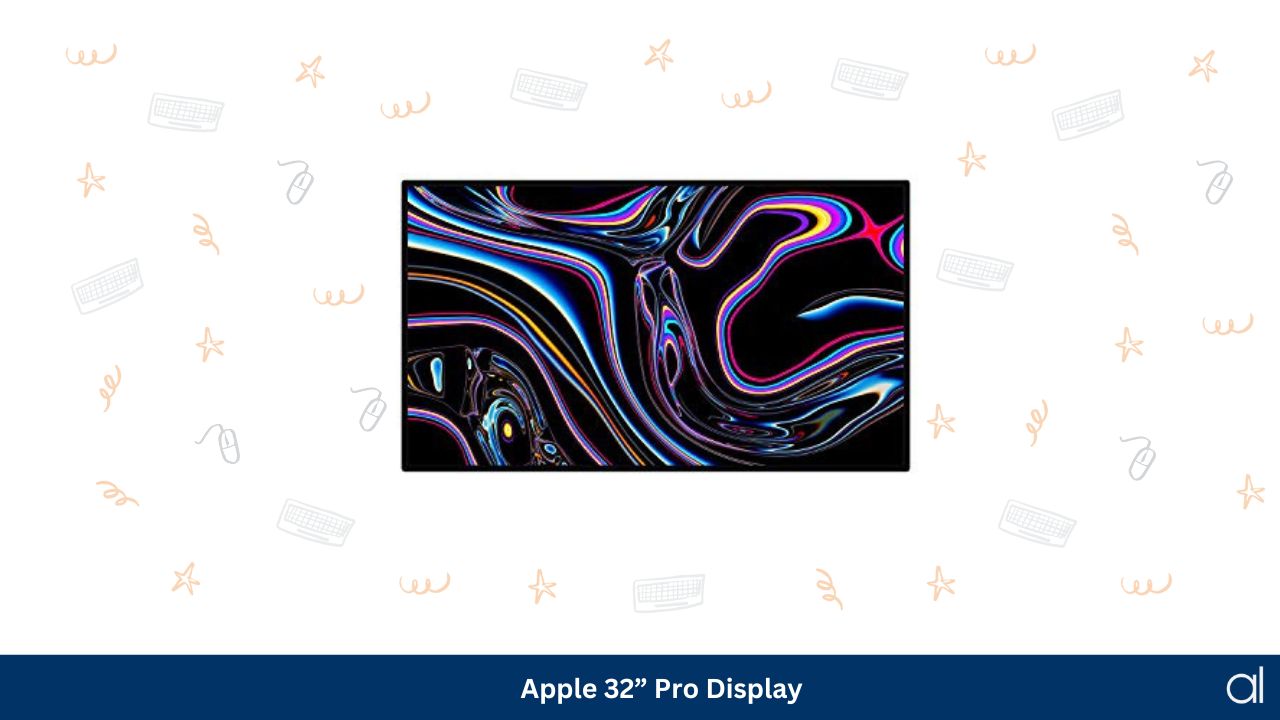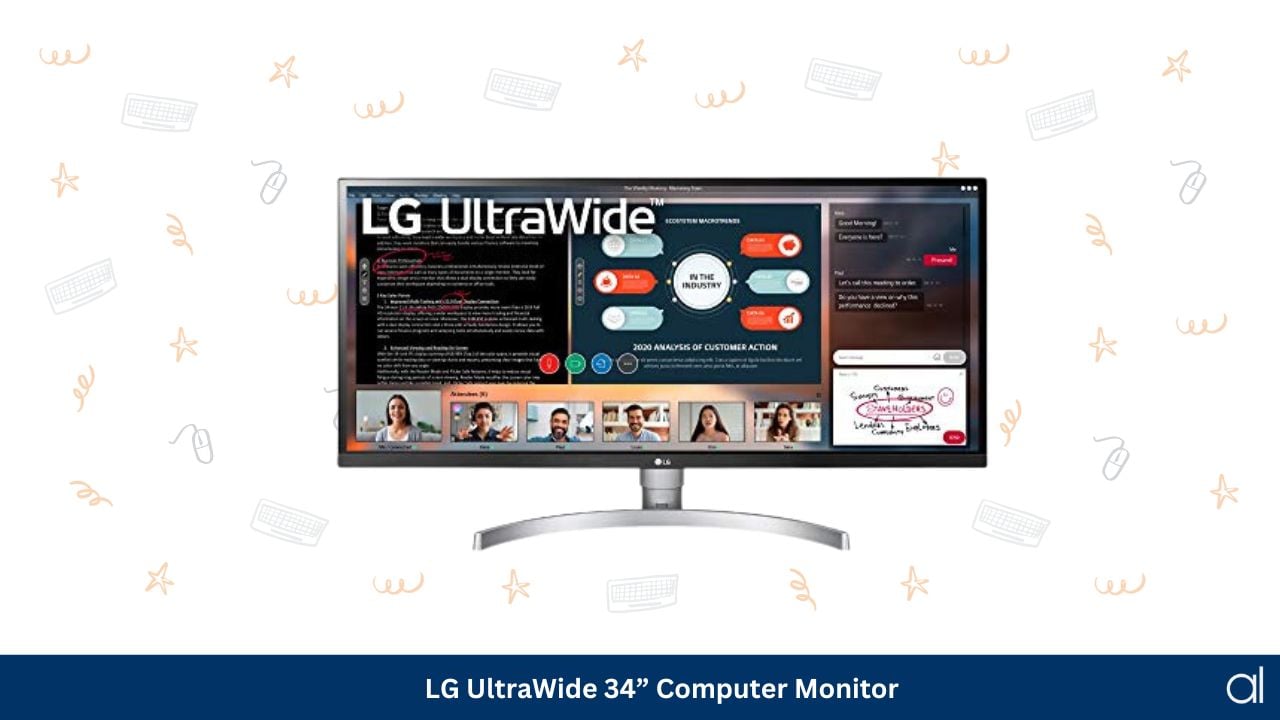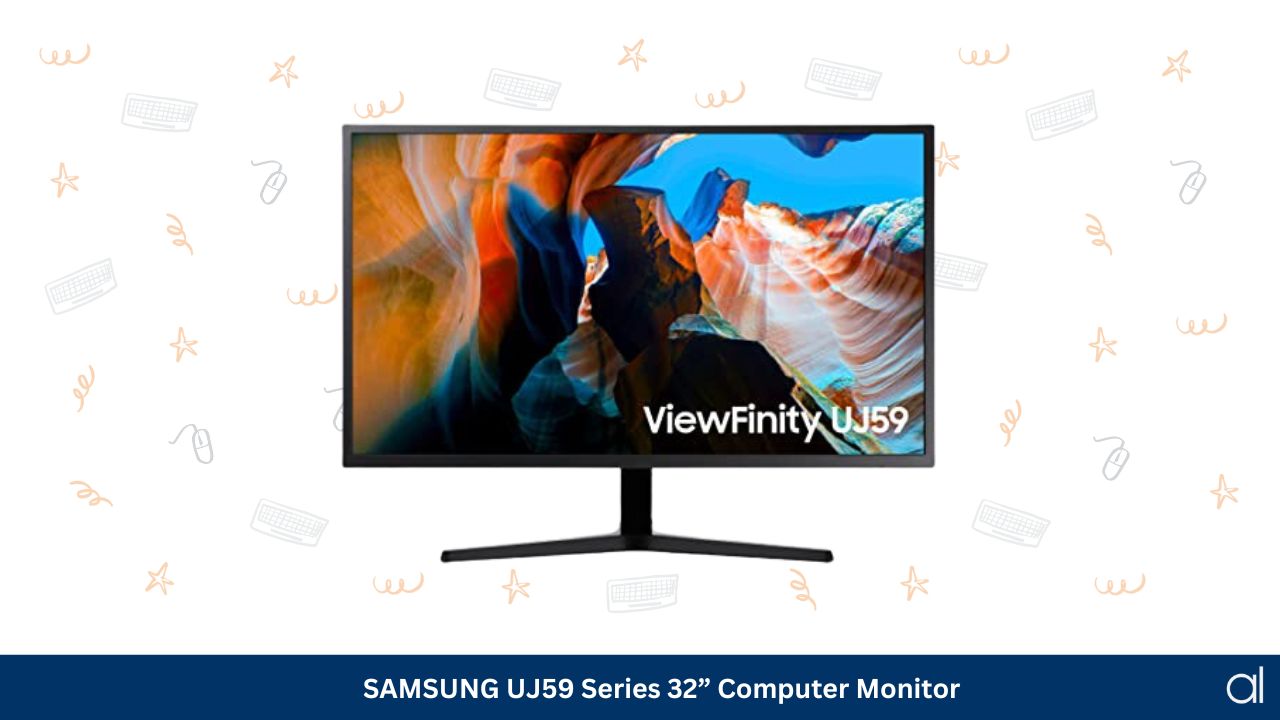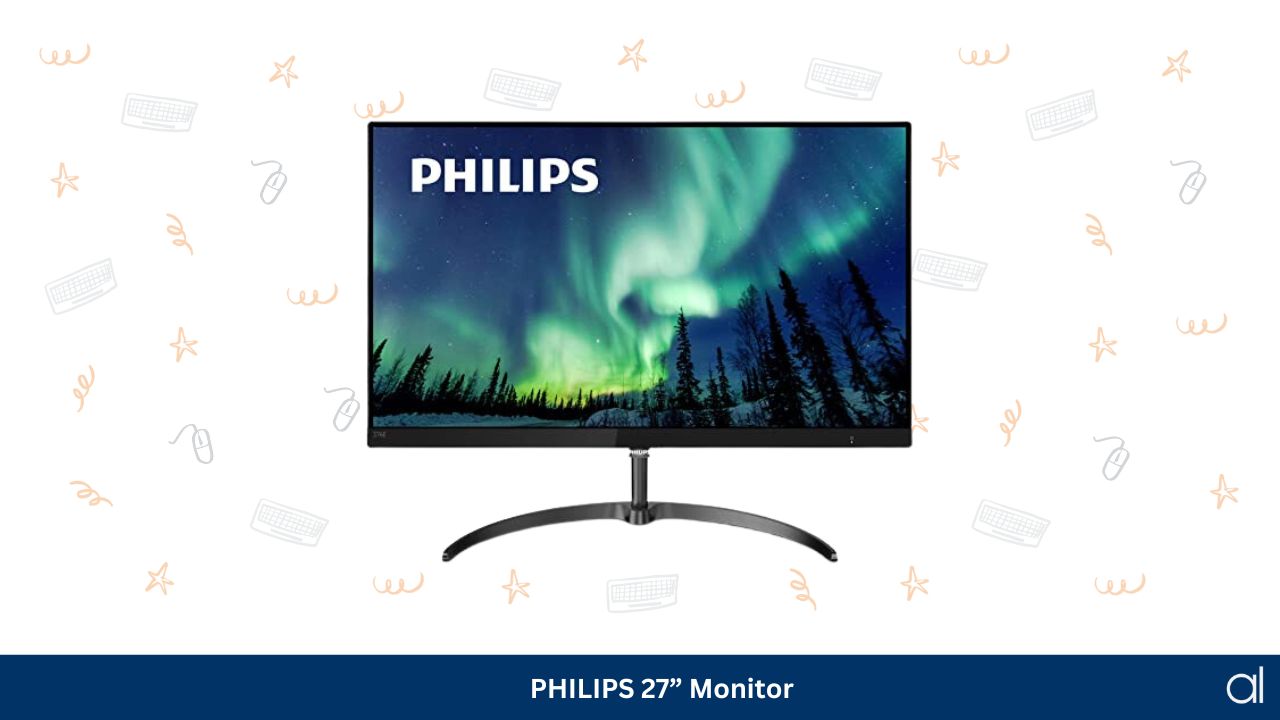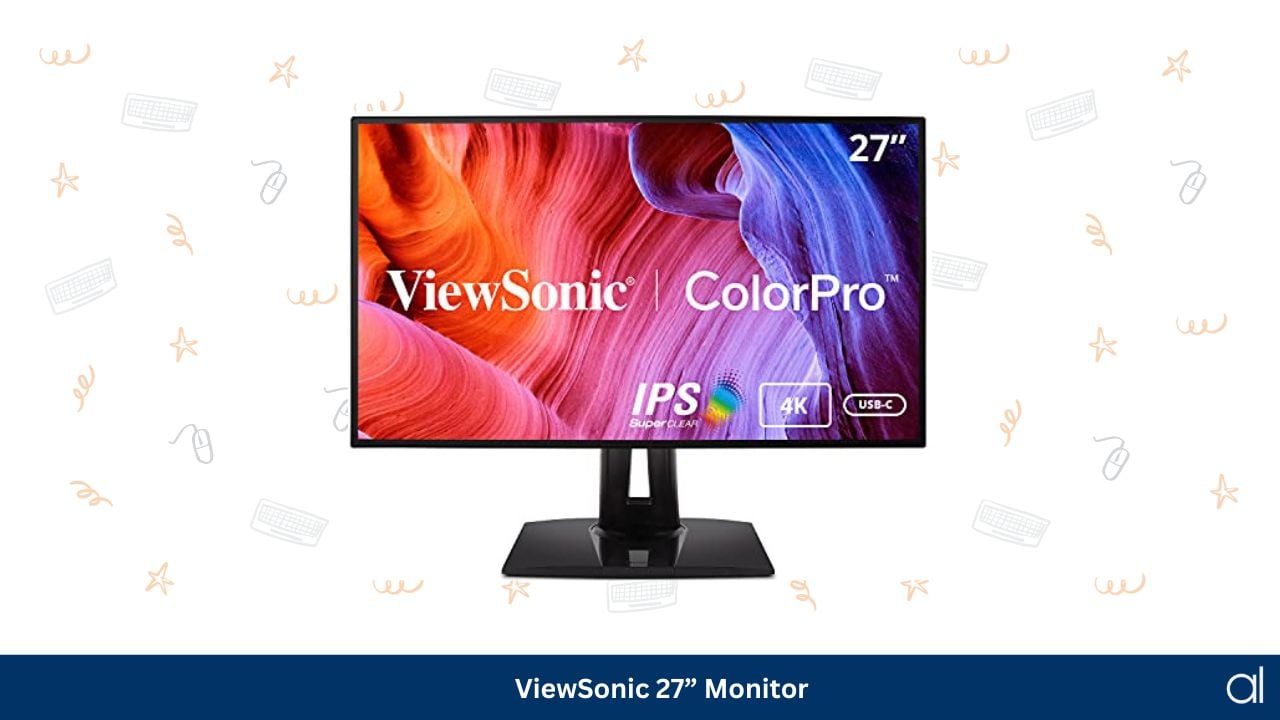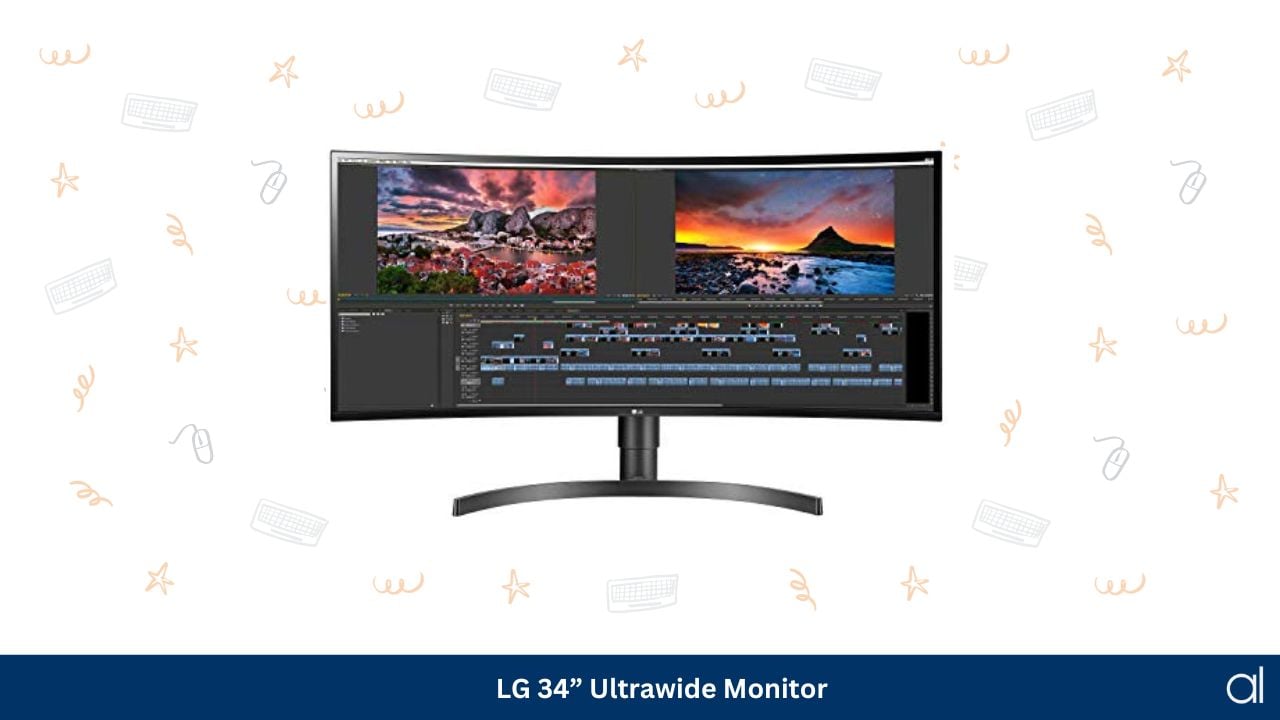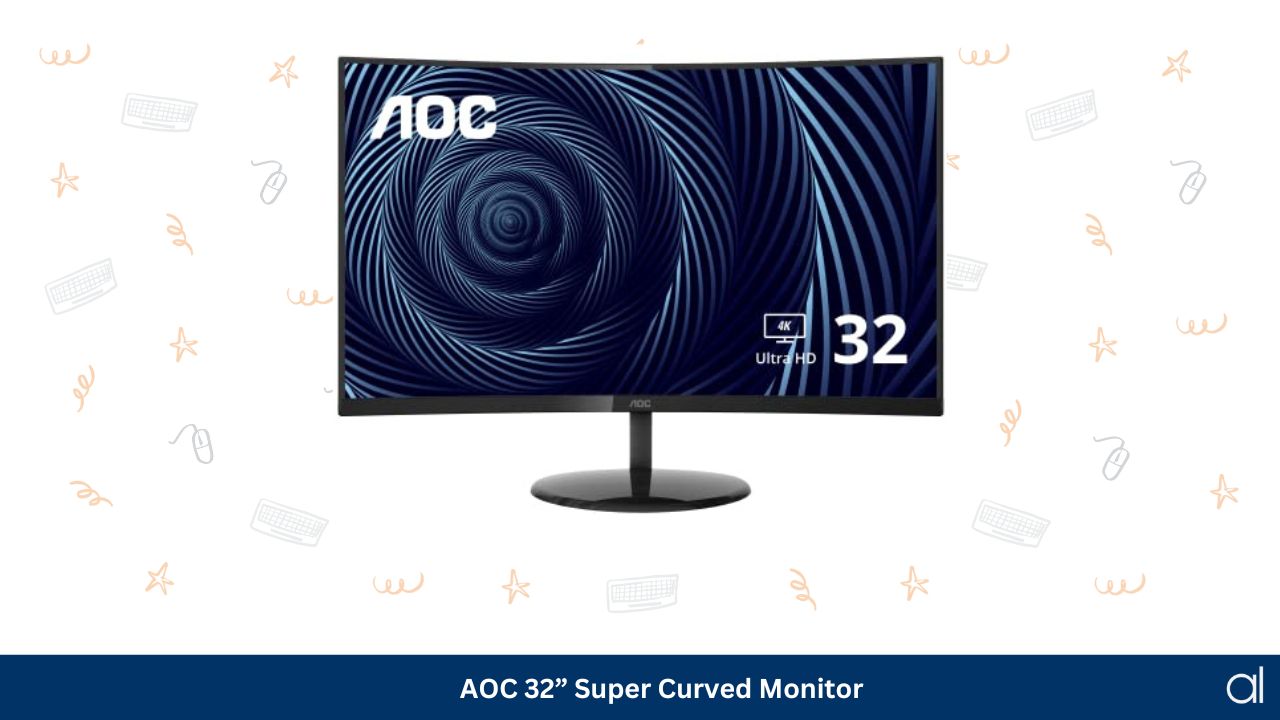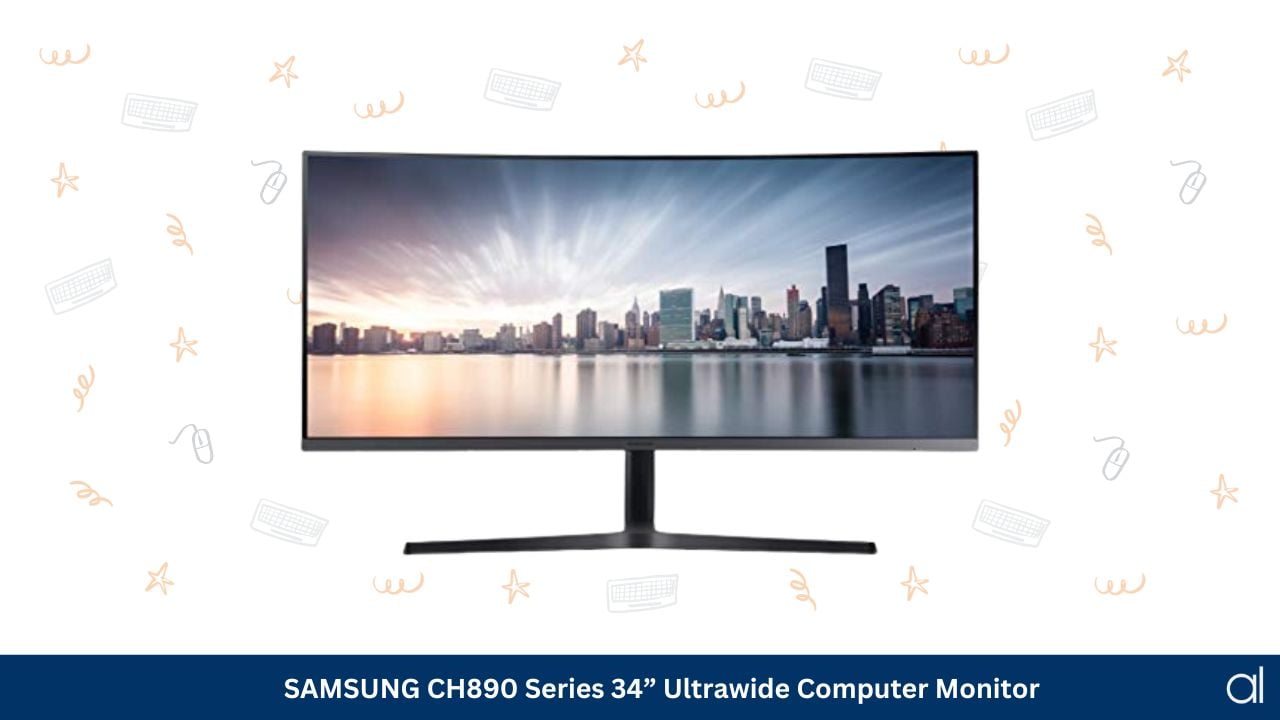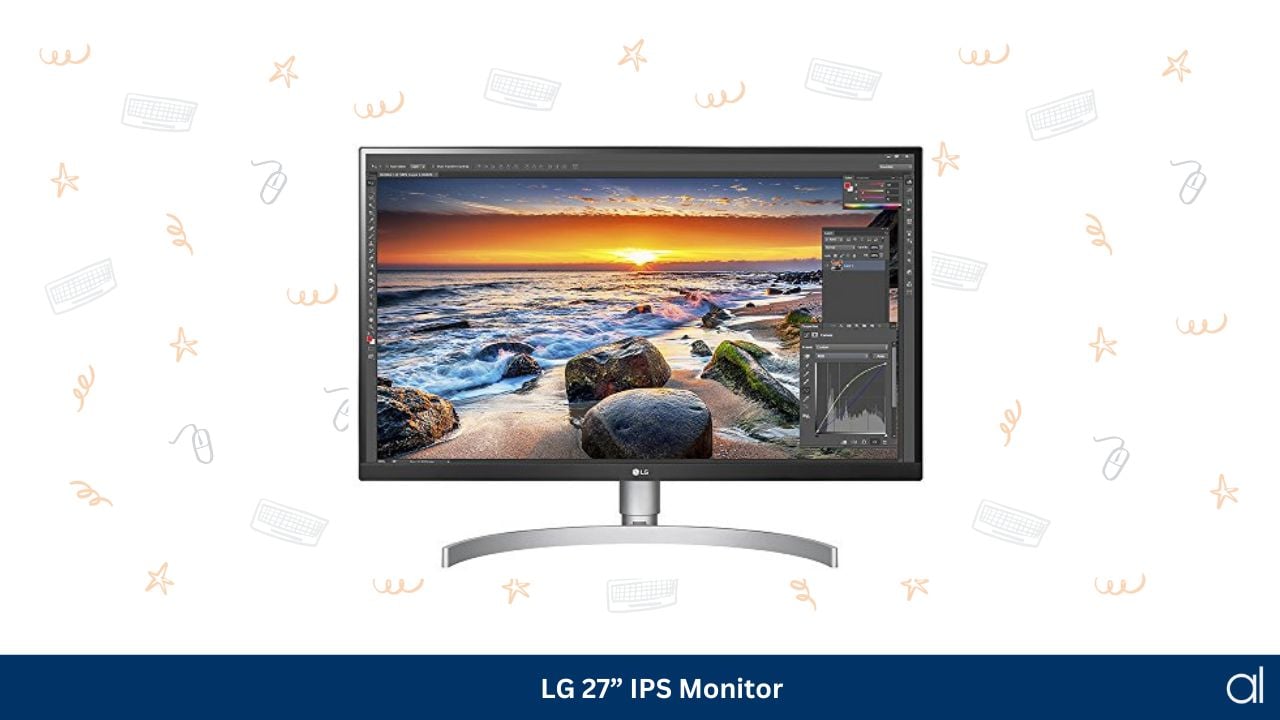No design project will appear complex if you work on a monitor with excellent color accuracy, precision, and crisp resolution.
But finding such a monitor is easier said than done. After all, how’d you know which monitor meets your requirements and delivers what it promises? I’ve handpicked the 15 best monitors for architects and artists that are worth considering. Whether you’re an architect or an artist, my recommendations will help you find the right monitor.
15 Best Monitors For Architects And Artists
1. BenQ 27” 4K Monitor – Best With Calman & Pantone Validated Technology
Right out of the box, the simple and straightforward design appealed to me, but this 27” monitor has a modern style with thin bezels.
This monitor also scored high on ergonomics, as I was able to swivel, tilt, and pivot it as per my needs. Its adjustable height is yet another reason BenQ made it to the top of my list.
What makes this among the best monitors for architects is its 4K UHD high resolution. With a screen resolution of 3840×2160 pixels, it offers extraordinary clarity, which is why fine details are clearly visible. From animations to photos and graphics, this monitor makes everything appear clear and crisp.
Further enhancing the picture quality is the AQCOLOR technology that reproduces accurate colors.
One of the most attractive features of this monitor is its eye-care technology that ensures great comfort during long periods of use. While the blue-light filter reduces eye irritation, the flicker-free feature minimizes fatigue.
Compatible with HDR, this monitor offers 4 modes- professional, darkroom, animation, and CAD/CAM to deliver professional results.
Unlike other monitors, it arrives factory-calibrated and is Calman and Pantone verified. It even has a KVM switch that makes it easy for users to control 2 monitors simultaneously. Thanks to the daisy chain connectivity capabilities, you can create multi-monitor setups seamlessly by connecting your laptop or computer.
What I Liked
- Supports dual view mode
- Eye-care technology
- HDR10-compatible
- 100% accurate image quality
- Available in multiple styles and patterns
What I Didn’t Like
2. Apple 32” Pro Display – Best With Retina 6K Display & XDR
Creatives who don’t mind spending a tad bit on computer monitors that display colors with accuracy must go for the Apple 32” Pro Display.
Where BenQ offers a 4K screen resolution, Apple Pro Display boasts a retina 6K display, equivalent to 20.4 million pixels. With up to 1,600 nits of brightness and true 10-bit color, this Apple monitor represents over a billion colors with accuracy. Adding to that is the Extreme Dynamic Range (XDR) that takes contrast, brightness, and color accuracy to a new level.
Using advanced LED technology, intelligent image processing, and light shaping, PRO XDR reduces blooming. This Pro Display also has a color palette with a P3 wide color range that produces vibrant images.
In terms of ergonomics, Apple doesn’t fall short. Its 81.28 cm retina display can be rotated when used with the Pro Stand. I could even tilt it and adjust the height, contributing to a pleasant experience.
You will find that the IPS LCD display comes with oxide TFT (thin-film-transistor liquid crystal display LCD) technology, making the bezels thinner.
Coming to the technology, this Pro Display has a 2D backlighting system to deliver outstanding contrast (vision). Apple-designed timing controller chip (TCON) controls high-speed modulation of LCD and LED pixels in the backlight.
Meanwhile, True Tone technology with dual ambient light sensors ensures an accurate viewing experience in ambient lighting conditions. And instead of a wide viewing angle, Apple offers a super-wide viewing angle that maintains contrast and color.
The Pro Display XDR screen further minimizes glare by scattering light.
What I Liked
- Landscape and portrait mode
- Clear color and image quality
- Nano-texture glass
- 1 Thunderbolt 3 and 3 USB ports
What I Didn’t Like
3. ASUS ProArt Display 32” Monitor – Best With Industry-Leading Mini LED Backlight Technology
ASUS ProArt Display 32” Monitor is a favorite among both professional and amateur creatives.
This 32” 4K computer monitor features industry-leading mini LED backlight technology to maximize brightness adjustment. You will get the same contrast level and color, which is why multiple artists and architects can work on the same screen.
Supporting Quantum dot technology, this computer monitor comes with an IPS 178° wide viewing angle panel. It’s integrated with new Off-Axis Contrast Optimization (OCO) technology to reduce halo effects so that on-screen content is displayed accurately.
Because of high color fidelity, the images appear with better uniformity, smoother color gradations, and higher accuracy. ProArt Display comes with an ASUS QuickFit virtual scale that allows users to align and preview their work before printing.
Advanced users can adjust hue parameters and saturation using the 6-axis color adjustment and create their own color specifications. On top of that, ASUS offers multiple modes for quick color gamut adjustment for photos, video editing, and color grading.
Multi-tasking is yet another important feature for creatives- ASUS understands this, and that’s why it features picture-in-picture and picture-by-picture modes.
For a comfortable viewing experience, ASUS uses flicker-free technology that prevents eye fatigue, and headaches, and minimizes eye strain. Blue light emissions are harmful to the eyes, which is why it utilizes ultra-low blue light technology. The hotkey lets you access the blue light filter from the on-screen menu.
As far as human factors and ergonomics are concerned, this computer monitor comes with a 4-way adjustable stand, which you can tilt, swivel, or pivot to make height adjustments.
What I Liked
- High color fidelity
- Computer multitasking
- Multiple options available
- Compatible with HDMI, USB-C, and DisplayPort
What I Didn’t Like
4. LG UltraWide 34” Computer Monitor – Best With Edge-Arch Monitor Stand
Ultrawide computer screens are hard to come by, which is why I decided to try the Ultrawide 34” monitor by LG Corporation.
Boasting a 21:9 full HD display, the LG computer monitor offers a resolution of 2560 x 1080 pixels. Drawing from experience, it offers more screen space than a full HD resolution display device. That means you can run and view multiple thumbnails, windows, and more at once
This monitor screen supports HDR 10, which surpasses the brightness and color accuracy of other monitors in the same price range. Thanks to the HDR effect, the picture quality algorithm is converted into high-quality.
As this widescreen monitor features an IPS display, it shows images with accurate colors.
When I tried this product, I found that the dual controller, screen split 2.0, picture mode presets, brightness, volume, and other features can be adjusted in a few clicks. This is likely due to the On-Screen Control feature that arranges essential settings in a handy window.
Moving on to the design, this budget monitor offers an immersive experience, thanks to the 3-side borderless screen. That means its streamlined display features a slim bezel only on the 3 sides.
Even the edge-arch monitor stand deserves mention because of its versatility. As and when you need, you can tilt and adjust the height and angle of this high-performance monitor.
With a high-resolution display, sRGB 90% color gamut, reader mode, and flicker-safe mode, this is the best budget monitor for creatives of all types.
What I Liked
- Smart energy savings
- Excellent refresh rate
- Adjustable monitor stand
- Side-by-side mode
What I Didn’t Like
5. Dell 34” Curved Monitor – Best With Vents For Heat Dispersal
Because many artists and architects prefer curved monitors, I included this Dell 34” monitor with a curved display on this list.
Engineered with an 1800R curved screen, this Dell monitor has a 21:9 display aspect ratio and is surrounded by ultra-thin bezels on the 3 sides instead of 4. Based on my personal observations, this curved monitor allows users to work with minimal distractions.
With a WQHD resolution of 3440 x 1440 pixels, this curved monitor offers 34% more pixels than a quad or ultra-high-definition television. Artists, architects, and other creatives will get a panoramic display and a sharp, crystal-clear view of images.
Upon reading the product manual, I discovered that this curved monitor is VESA DisplayHDR 400-certified. That’s why the images and videos have more details and colors than SDR panels while ensuring excellent contrast and clarity for life-like visuals.
Working for extended periods is easy on this curved monitor, thanks to the adjustable height and tiltable head. What makes it the best-curved monitor is its uniquely designed downlight that provides ambient and desktop illumination suited for working in low-light conditions.
Much like the best computer monitors, it is engineered with vents for enhanced heat dispersal. After conducting experiments with it, I came to the conclusion that it’s safe for use for long hours.
Furthermore, this professional monitor offers more personalization, like a dark stabilizer, an FPS counter, and a timer. Hence, this allows users to manage everything from shadow control to brightness and frame rate.
It’s also integrated with flicker-free technology that allows users to control the brightness for a comfortable viewing experience.
What I Liked
- 4 USB ports and 2 HDMI ports
- Sold in multiple display sizes and styles
- Flicker-free
- Anti-glare screen
- Small yet sturdy monitor stand
What I Didn’t Like
6. SAMSUNG UJ59 Series 32” Computer Monitor – Best With UHD Upscaling Technology
Samsung has become quite a name in the tech industry because of its top-notch computer monitors. No wonder I included its UJ59 Series 32” Computer Monitor because of the lots of nifty features it offers.
Delivering 4x more pixels than a full HD monitor, this 32” screen allowed me to view web pages and documents without much scrolling. Because of the extra screen space, I was also able to use multiple windows and toolbars, which wasn’t the case with a 16:9 ratio aspect screen.
Much like Apple Pro Display, this Samsung computer monitor supports a billion shades of color, delivering realistic, vivid images. To test its color accuracy, I printed a few of my architecture models, and honestly, there weren’t many variations. So, architects and artists can create depth in their designs without worrying about anything.
To my surprise, Samsung has integrated this monitor with UHD upscaling technology that includes detail enhancement and signal analysis. It claims to convert SD HD and full HD content to close to UHD-level picture quality.
As I tested it, I found that the low input lag mode ensures a smooth working experience by minimizing the delay between the mouse and keyboard and the on-screen response. And if you wish to boost contrast in scenes, switching to game mode will optimize screen contrast.
Creatives who often multi-task will find this monitor useful, as it offers both picture-by-picture and picture-in-picture. While the former lets users connect to 2 devices while maintaining its original quality, the latter allows resizing the second source by up to 25%. Therefore, you can position it anywhere while working.
What I Liked
- Ample screen space
- Vivid and realistic images
- AMD FreeSync
- Game mode
What I Didn’t Like
7. Dell 34” Ultrawide Computer Monitor – Best With Easy Arrange Feature
Weighing less than 25 pounds, the Dell (Southampton) 34” Ultrawide Computer Monitor comes with a curved screen that offers an immersive experience. That means you can see stunning visuals and work on finer details better on this monitor than on others.
Dell 34” computer monitor comes with a graphics display resolution of 3440 x 1440 pixels, meaning it offers more screen space than a 1080p monitor. More screen space means you can complete more work in less time- perhaps, that’s why it makes an excellent option for architects and artists.
Where standard monitors have thick bezels, this computer screen has ultra-thin bezels on the 3 sides, despite having a large screen. Thin bezels with more screen space allow you to multitask without setting up dual monitors.
After trying out this product, I found that you can connect 2 PCs to the monitor and display models, illustrations, or other content using picture-in-picture and picture-by-picture features. Besides viewing, you can edit content from 2 different PCs with a single mouse using the KVM feature.
Further, the improved Dell display manager allows users to get more work done in less time, thanks to the Easy Arrange feature.
With the opportunity to personalize 5 windows and 38 preset window partitions, Easy Arrange will allow you to tile numerous apps across 1 or more displays seamlessly. Transition is also seamless on this Dell 34” curved display screen.
No matter where you sit, you’ll get consistent views of your models or portraits, thanks to IPS technology. Other noteworthy features are height, swivel and tilt adjustment, anti-glare coating, and a flicker-free screen.
What I Liked
- Can multitask efficiently
- Comfort view
- Flicker-free screen
- Comes with plenty of ports
- Easy-to-use joystick control
What I Didn’t Like
8. PHILIPS 27” Monitor – Best With Multi-View Technology
The PHILIPS 27” monitor is regarded among the best monitors for architects and artists for several reasons.
Despite being a 27” monitor, it boasts a 4K UHD IPS screen, which has a resolution of 3840 x 2160 pixels. The ultraClear resolution of this LED monitor with an IPS panel offers wide viewing angles, meaning you’ll enjoy an immersive experience from every side. In my time with the product, I noticed that it delivers life-like visuals with clarity from every angle.
Furthermore, the IPS panel is carefully calibrated to produce more than 1.074 billion colors for details and smooth color gradations. It also covers more than 109 & sRGB color gamut areas, which is why images and videos are represented with color accuracy.
Unlike standard TN panels or high-dynamic-range television, IPS technology panels deliver crisp images with vivid colors. So, rest assured, working on projects that demand proper screen brightness and color accuracy will be easy on this architect monitor.
Creatives, including architects and artists, usually work for long hours, which often leads to eye fatigue. But this budget monitor for architects and artists claims to reduce eye fatigue, thanks to the flicker-free screen.
For maximum viewing size and minimal distraction, PHILIPS has added ultra-narrow borders. And that’s what makes it the best computer monitor for graphic design and professional applications, including CAD solutions.
Integrated with multi-view technology, you can easily connect multiple devices to this monitor. Multi-view enables active dual connect, which allows you to view multiple ultra HD devices like notebooks and PCs simultaneously.
Needless to say, it comes with flicker-free technology for a comfortable viewing experience.
What I Liked
- Crisp images
- Vivid colors
- Flicker-free screen
- Compatible with HDMI cable
- Ultra-narrow border
What I Didn’t Like
9. ViewSonic 27” Monitor – Best With Color-Sensitivity Mode
With 4K UHD IPS, the ViewSonic 27” Monitor delivers life-like colors, which is why it made its way into my list.
This 75Hz IPS monitor boasts a 4K ultra HD resolution, displaying over 8 million pixels and 4 times more resolution than a full HD computer monitor. As it has a resolution of 3840 x 2160 pixels, the images shown on the monitor screen are packed with details and clarity.
Like every ViewSonic monitor, this 27” panel monitor is factory-calibrated to provide an excellent Delta E<2 value for color accuracy. In this Pantone-validated display, there is color accuracy in every pixel. However, if you still have doubts, you can calibrate the computer hardware to maintain its color accuracy.
Additionally, you can adjust contrast, brightness, volume, and other display settings, thanks to the color sensitivity mode. It also features a customizable color profile through which you can adjust six primary colors.
My analysis of this product revealed that ViewSonic took into account the complexity of architects’ and artists’ work, and that’s why it has incorporated ergonomics in the design. Its advanced design allows users to adjust the height of the monitor. Besides that, you can tilt, pivot, and swivel the unit to reduce eye and back strain.
Much like other monitors on the list, this ViewSonic monitor features ultra-thin bezels to offer a seamless viewing experience in multi-monitor setups. On top of that, its built-in eye care technology combats eye fatigue.
With a VESA-compatible mount, HDR 10 content support, and Adobe RGB color space, it’s a bang for the buck.
What I Liked
- Sold in multiple styles
- Reduced cable clutter
- Detailed and clear images
- Ergonomic design
What I Didn’t Like
10. LG 34” Ultrawide Monitor – Best With Virtually Borderless Design
Finding it tough to find an ultrawide yet slim monitor for your small to medium-sized work table? Then check out the LG 34” monitor that has an ultrawide screen but isn’t as burly as you’d expect.
Coming with an aspect ratio of 21:9 WQHD, this monitor sports a curved IPS display and has a resolution of 3440 x 1440 pixels. On top of that, it supports sRGB 99% color gamut, which means color accuracy is exceptional. No matter your preferred viewing angle, this monitor delivers images with accuracy from all sides.
Creatives will love that this monitor from LG renders bright and dark areas excellently, thanks to HDR 10. With a minimum contrast ratio of 700:1 and a maximum of 1000:1, this monitor is a viable option. However, for more detailed work, going for a high contrast ratio will be a better bet.
As far as power delivery and data transfer are concerned, the USB-C port comes to users’ rescue. Thunderbolt (interface) 3, as well as USB and 2 HDMI ports, make data transfer a breeze.
The on-screen control feature of this monitor provides quick and easy access to a host of monitor settings, like split screen (computing) and game mode.
Besides functionality, this monitor scores high on aesthetics. Finished in black, it exudes minimalism and blends well with all kinds of office or home decor. Further enhancing the aesthetics is its virtually borderless design. Though aesthetically appealing, its ergonomic aspects have made it a favorite of artists and architects. Equipped with an adjustable stand, you can tilt and adjust the height for your convenience
What I Liked
- Easy setup
- Available in 60W, 65W and 90W power
- Screen Split 2.0
- 178-degree viewing angle
What I Didn’t Like
11. AOC 32” Super Curved Monitor – Best With LowBlue Mode Technology
For an immersive experience, the AOC 32” monitor comes with a super curved screen that supports an ultra HD image resolution of 3840 x 2160 pixels. That means you get 4x more pixels on this monitor than a full HD and 2.5x pixels WQHD.
As is expected, a monitor screen with such great resolution displays images with color accuracy.
What’s more, this best monitor for architects is equipped with a VA display that offers wide viewing angles and displays brilliant colors. Rest assured, the content will appear bright from every aspect, which makes it ideal for group work.
A high-density panel, together with a high-density pixel, will add life to your images and graphics, making it ideal for CAD/CAM solutions. Even working on huge spreadsheets is easy on this curved monitor, thanks to the super-curved screen.
Equally praiseworthy is its Screen+ feature that ensures maximum productivity by allowing you to work on multiple applications simultaneously.
Better yet, this AOC monitor is integrated with LowBlue mode technology. This software solution keeps the eyes healthy by reducing unpleasant blue light waves by regulating color temperature without affecting the vibrant color of the IPS panel. Adding to that is its flicker-free technology that further makes the screen easy on the eyes.
The image quality of this monitor is better due to the vast color accuracy, thanks to the sRGB of 121% and Adobe of 90%.
Besides the screen size and display quality, what makes it the perfect monitor for an artist, architect, and graphic designer is its three-sided frameless screen. This design allows for seamless monitor setups, boosting productivity and efficiency.
What I Liked
- Multiple sizes and styles
- Wide color gamut
- Eye saver mode
- Plenty of connectivity ports
What I Didn’t Like
12. PHILIPS 34” Curved Frameless Monitor – Best With Advanced Multi-Domain Vertical Alignment Technology
While the PHILIPS 27” monitor is the best monitor for architects with small workspaces, its 34” counterpart is well-suited for large tables.
Boasting a screen size of 34” and a curvature of 1,500, this monitor is ultrawide and curved for wide viewing angles and an immersive experience. So, if you’ve been hunting for a new monitor that would be worth upgrading from regular quad HD monitors, this PHILIPS monitor will be a bang for the buck.
On this 34” screen, colors are displayed with accuracy, so working on your creative models and illustrations won’t be very challenging. Thanks to the wide color technology, PHILIPS displays up to 99.5% NTSC and 121.3% color gamut. Perhaps because of this, images are life-like.
What’s more, it’s integrated with an advanced multi-domain vertical alignment technology whose super-high static contrast ratios deliver bright and vivid images. And that’s why this is regarded as the best monitor for architects and artists.
Interestingly, this PHILIPS monitor is compatible with a MultiView display, meaning you can use multiple devices on this screen. All you’ll have to do is enable active dual connect and view; after that, you can work on your notebook and PC simultaneously.
Aside from performance and features, it is worth noting that the design of this ultrawide monitor is ergonomic. With the adjustable stand, you can adjust the height of the monitor. Not only that, but you can also tilt the monitor for a pleasant working experience and work while standing or sitting.
Cable management is also incorporated in the design, which, in my opinion, is a thoughtful touch, as it keeps the workplace tidy.
What I Liked
- Flicker-free technology
- LowBlue mode
- MultiView
- Cable management
- Multiple styles and sizes available
What I Didn’t Like
13. Sceptre 34” Curved Monitor – Best With 1500R Degree Curved Design
“Exceptional work, dominant play”- that’s what Sceptre promises with its 34” curved monitor. So, obviously, I had to test it out to see if it lived up to its claim.
Right out of the box, the large screen mounted on a small yet sleek stand caught my attention. Initially, I thought the stand wouldn’t be able to handle the weight of this 16.6 pounds monitor, but that wasn’t the case.
The stand is well-designed and robustly built to accommodate this ultrawide monitor. Still, if you’re worried, you can mount it on the wall.
Even in terms of ergonomics, the monitor doesn’t disappoint us, as users can easily tilt it right, left, up, or down.
Now, coming to its build, its ultrawide screen is slim yet curved with a 21:9 aspect ratio (image) and resembles the contours of the human eye, offering an immersive experience. Its 1500R degree curved design allows you to spot mistakes in your 3D modeling and illustrations before submitting them to your client.
On this monitor, the possibility of image stuttering and tearing is low, as it’s integrated with Adaptive Sync technology. Adding to that is its refresh rate of 100 Hz, which changes images quickly and smoothly, further reducing screen tearing.
Not to forget, this monitor protects against eye strain, irritation, and fatigue, thanks to the blue light filter. Sceptre monitor features multiple ports- one display port input delivers a 100 Hz refresh rate, whereas two HDMI ports have a refresh rate of up to 85 Hz. One audio out is also included to connect to your favorite headphone or audio device for audio calls.
What I Liked
- Edgeless design
- Blue light filter
- Multiple ports
- Eliminates imager stuttering and tearing
What I Didn’t Like
14. SAMSUNG CH890 Series 34” Ultrawide Computer Monitor – Best With Seamless Device Switch
Samsung claims to deliver world-class immersion and performance- no wonder it’s a much sought-after brand for monitors among creatives of all types.
And because the UJ59 Series delivered what it claimed, I decided to try out the CH890 Series. While the UJ59 counterpart features a 32” screen, this monitor boasts a 34” screen; however, it has a resolution of 3440 x 1440 pixels.
Despite featuring less screen resolution, the CH890 Series allows users to multitask. On its wide screen, you can connect to 2 different devices simultaneously with its picture-by-picture and picture-in-picture capabilities without compromising the image quality.
Thanks to the Automatic Source Switch, this monitor recognizes newly connected devices when you plug them in. This seamless device switch makes it the best monitor for architects and artists.
Like the best monitor for architects, it features a split-screen mode for greater productivity.
Combined with USB-C, multiple peripherals can be connected to this monitor with a single cable. That means you wouldn’t need extra dongles, port hubs, or docking stations to transmit data or power.
Surprisingly, this monitor has a contrast ratio of 3000:1, meaning the projected image, number, graphs, or texts will be detailed.
Samsung also does a great job in integrating its monitor with eye-saver mode and flicker-free technology. Because of these 2 features, working for prolonged hours is easy, as you won’t experience eye strain or irritation.
In packing its monitor with innovative features, Samsung didn’t forget about ergonomics; its stand testifies to this statement. Coming with an adjustable stand, you can swivel, tilt or move it up and down and work.
What I Liked
- VESA mount
- Flicker-free technology
- Eye-saver mode
- Sleek and stunning design
- Adjustable
What I Didn’t Like
15. LG 27” IPS Monitor – Best With Color Accuracy From Off-Angle
Still haven’t found the best monitor for architects and artists? Then here’s another excellent option from LG that could be the perfect pick for your day-to-day AutoCAD illustrations.
As compared to its counterpart on this list, this monitor boasts a screen of 27”, which is neither too small nor too wide but ideal for use by 1 person. Furthermore, this IPS display features a 4k UHD resolution of 3840 x 2160 pixels. As I spent time with the product and started viewing images, I noticed that the monitor delivers accurate colors even when viewed off angle.
What’s more, it’s compatible with HDR10, meaning it supports specific brightness levels and colors that ordinary monitors don’t. And with more than 99% coverage of the sRGB spectrum, it delivers accurate colors.
LG with this monitor offers an on-screen control setting, which puts a host of settings like picture mode presets, volume, and dual controller into a handy window for quick and easy access.
Once you upgrade to this monitor, screen stuttering and tearing will become a thing of the past, thanks to the AMD FreeSync.
Advanced gaming features are also integrated by LG into this monitor, because of which you’ll be able to optimize monitor settings and reveal superior detail in dark scenes.
In terms of design, the adjustable display is a thoughtful addition by LG, as you can pivot it, tilt it, and even adjust the height at your convenience. Of course, this is possible because of the adjustable ArcLine stand.
Other features that make it the best monitor for architects and artists are a USB hub, a borderless display, and an anti-glare screen.
What I Liked
- Anti-glare screen
- Ultra HD resolution
- Ultra-thin bezels
- Adjustable display
What I Didn’t Like
Top Monitors For Architects And Artists Comparison Table
| Top Monitors | Standing Screen Display Size | Screen Resolution | Color | Refresh Rate |
|---|---|---|---|---|
| BenQ 27” 4K Monitor | 27” | 3840 x 2160 pixels | Gray | 60 Hertz |
| Apple 32” Pro Display | 32” | 6016 x 3384 pixels | Gray | 60 Hertz |
| ASUS ProArt Display 32” Monitor | 32” | 3840 x 2160 pixels | Black | 60 Hz |
| LG UltraWide 34” Computer Monitor | 34” | 2560 x 1080 pixels | Black/White | 75 Hz |
| Dell 34” Curved Monitor | 34” | 3440 x 1440 pixels | Black | 144 Hz |
| SAMSUNG UJ59 Series 32” Computer Monitor | 31.5” | 3840 x 2160 pixels | Black | 60 Hz |
| Dell 34” Ultrawide Computer Monitor | 34” | 3440 x 1440 pixels | Black | 60 Hz |
| PHILIPS 27” Monitor | 27” | 3840 x 2160 pixels | Gunmetal | 60 Hz |
| ViewSonic 27” Monitor | 27” | 3840 x 2160 pixels | Gunmetal | 60 Hz |
| LG 34” Ultrawide Monitor | 34” | 3440 x 1440 pixels | Black | 60 Hz |
| AOC 32” Super Curved Monitor | 32” | 3840 x 2160 pixels | Black | 60 Hz |
| PHILIPS 34” Curved Frameless Monitor | 34” | 3440 x 1440 pixels | Black | 100 Hz |
| Sceptre 34” Curved Monitor | 34” | 2560 x 1080 pixels | Machine Black | 100 Hz |
| SAMSUNG CH890 Series 34” Ultrawide Computer Monitor | 34” | 3440 x 1440 pixels | Machine Black/Titanium | 100 Hz |
| LG 27” IPS Monitor | 27” | 3840 x 2160 pixels | Machine White | 60 Hz |
Buying Guide For The Best Monitors For Architects And Artists
Knowing the 15 best monitors certainly helps in the decision-making process, but know that you’re only halfway through the journey. Unless you’re tech-savvy, it’s hard to understand which monitor is well-suited for your job type. Several factors need to be taken into account while choosing a monitor for architects and artists.
Considering that individuals from a non-technical background have a hard time picking the right monitor, I’ve shortlisted a few important factors that must be considered when buying a monitor. There’s a high possibility that if you ignore any of these factors, you’ll end up choosing the wrong monitor and waste your money.
So, let’s check them out.
1. Panel Type
While LCD panels are more popular, monitors are available in 4 different types of panels- IPS, VA, TN, and OLED.
The world of computer monitors is ruled by IPS. Monitors with IPS panels are bright and crisp, with great viewing angles and sharpness. However, their contrast levels and black levels are slightly disappointing.
VA monitors are colorful and bright, as well as have better dark levels and contrast ratios. On top of that, their motion quality is excellent. The only trade-off is that their viewing angles are limited, and the image quality is excellent only when viewed straight-on.
TN or twisted nematic technology panels usually have a quick response time, contributing to better motion clarity. Sadly, its contrast ratio and color performance aren’t up to the mark.
Finally comes OLED panels that are based on organic pixel elements instead of LCD technology. OLED panels are said to be the king of black and contrast levels. Also, these panels are best-in-class for motion clarity and surpass others in color performance. But bear in mind that they aren’t easy on the pockets.
Considering everything, I’d say IPS cuts above the others in terms of affordability and quality.
2. Size
Clearly, monitors are available in various sizes, including ultrawide curved screens.
Yes, bigger is better, but considering how a monitor fits within your FOV (field of view) is important. Field of view means all parts of a monitor are clearly visible without making any head movement or causing eye strain.
24-inch monitors with a resolution of 1920 × 1080 pixels are more or less ideal for most, except that they lack sharpness. 32-inch and 27-inch models are better at 2560 x 1440 resolution because they are sharp and well-suited for professional works that require details.
4K UHD monitors with screen resolutions of 3840 × 2160 pixels are excellent for large screens. Also, they are a great upgrade from 32-inch and 27-inch monitors. Images, videos, illustrations, drawing models, etc., look razor-sharp on such monitors.
How large or small your workspace is will play a crucial role in deciding the type of monitor you should go for. So, take that into consideration and then decide.
Monitors with ultrawide formats are similar to 27” monitors in height but are several inches wide. Also, they have an aspect ratio of 21:9, unlike others with a 16:9 aspect ratio screen.
As is evident, monitors with ultrawide screens are suitable only for large working spaces because of their width. Of course, they are more expensive than other monitors, so keep that in mind.
3. Refresh Rate
The refresh rate of a monitor is the number of times the display image can be updated each second. More or less, monitors have a refresh rate of 60 Hz, but there are quite a few with a refresh rate of 100 Hz, 144 Hz, 240 Hz, or 360 Hz.
There’s no denying that high refresh rates are always better because images appear smooth in motion. At the same time, it lowers input lag. Even monitors with 100 HZ are smooth, which will be feasible for architecture-related works.
4. Ergonomics
A monitor that performs well in every respect but scores low on ergonomics will never be the right one. That’s because such a monitor will lead to back and neck pain and cause eye strain and irritation.
So, ergonomics is another factor that must be considered when buying a monitor. Always go for monitors whose stands can be tilted, pivoted, and swiveled in your desired direction. Such monitors guarantee maximum comfort.
Quite a few brands sell monitors with stands whose height can be adjusted. Of course, if you ask me, I’d suggest going for them so that you can lower it or move it up alongside adjusting it right and left. This adjustable feature allows for a comfortable viewing experience.
Most monitors are VESA mount-compatible, meaning you can mount them on the monitor arm and swivel it as you want. However, those compatible with VESA mounts are expensive.
5. Connectivity Ports
Ports are absolutely a necessity when using monitors for architects or other professional design-based works. That’s because they are helpful in connecting other devices like PCs or notebooks to your monitor or other input tools.
Therefore, look for monitors that come with DisplayPort, dual-link DVI ports, thunderbolt ports, and HDMI ports. Of all, the DisplayPort is relatively fresher on the market. Even then, I suggest looking for it when upgrading your monitor to maximize productivity.
How important is pixel density for architects?
The measure of the clarity and sharpness of screen resolution or image refers to pixel density. Architects must opt for monitors that boast high pixel density, as it gives more details to their work. As a rule of thumb, the higher the pixel density, the clearer and sharper your monitor screen will be. That means the images will appear crisp.
Do architects need to have a 4K display?
Well, even though it isn’t absolutely necessary, you would get a much better and more accurate image on a 4K UHD IPS (in-plane switching) screen. The monitors with 4K display resolution are specially designed for artists, designers, and architects who need access to the best color and viewing angles.
On top of that, 4K resolution also ensures that you can see even the tiniest of details in an image or design. This helps to keep your work error-free. Moreover, 4K displays usually come with high contrast ratio and screen brightness, which is essential for architects who work with software like AutoCAD.
What is the best contrast ratio for monitors for architects?
Many experts suggest going for monitors with a contrast ratio of 3000:1 because high contrast ratio means more detailed drawings. However, a contrast ratio of 1000:1 is also feasible, but remember, details may not be as evident as in monitors with a contrast ratio of 3000:1.
In a 3000:1 contrast ratio monitor, black text on white backdrops is also easy to read. Now that’s another reason to prefer monitors with a 3000:1 ratio to 1000:1.
Do architects and artists need 4K monitors?
Absolutely, yes! In fact, artists and architects should go for 4K monitors if their budget permits. That’s because these monitors deliver colors with accuracy and clarity, which helps them work on computer-aided design projects with ease.
Conclusion
Before I call it a day, here’s a quick rundown of my favorite monitors from the list.
The BenQ 24” 4K resolution monitor wins on performance, versatility, and ergonomics. With a resolution of 3840 x 2160 pixels, this monitor reveals fine details and displays them with clarity. Also, it’s ergonomically designed, meaning it can be adjusted with ease.
Architects and artists who don’t mind shelling out a few dollars on monitors that produce vibrant imagery can opt for the Apple 32” Pro Display. With Pro XDR, P3 color range, and 2D backlighting system, the Apple monitor is worth the splurge.
Related Articles
10 Best Laptop for Architects and Designers
6 Best iPad Pro Drawing Case Options for Artists
The 4 Best Tablets for Architects
Ultimate Guide Towards the Best Laptop for SketchUp
Simply the Best Mouses for Photoshop
The 6 Best Graphic Tablets for Beginners
11 Best VGA to HDMI Converters
XP Pen Artist 24 Pro Review | Huge Affordable Drawing Tablet for Pros
47 of the Best Gifts for Architects
Huion Vs. Wacom [Leading Drawing Tablet Brands]
Cintiq Vs Surface Pro [Choose The Best Drawing Table]
XP Pen Vs Huion [Drawing Tablets For Architects]



